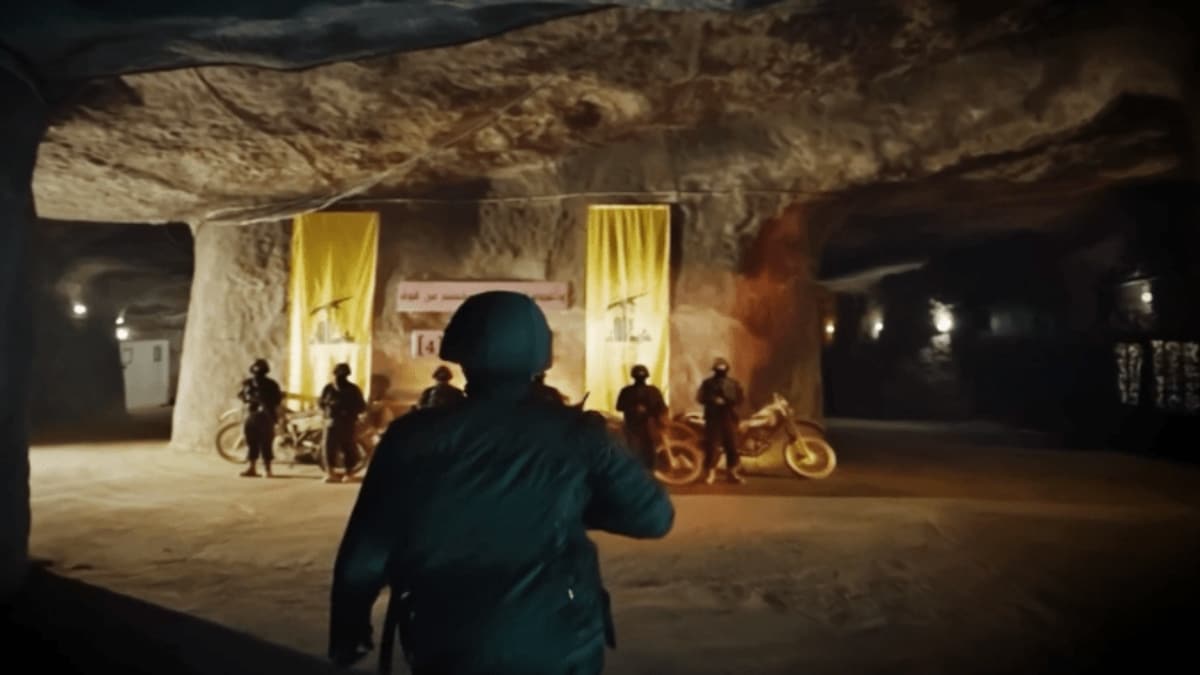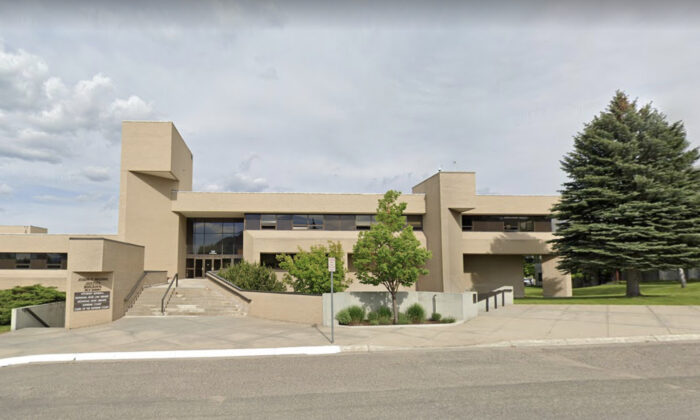
The Iranian-backed militant group Hezbollah fired dozens of rockets from Lebanon, targeting northern Israel on Sunday. On 25 August, the Israel Defence Forces (IDF) had carried out a series of airstrikes in southern Lebanon, claiming that Hezbollah had been preparing to fire a large number of rockets and missiles into Israeli territory. Yet the strike happened.
Shortly after the aforesaid Israeli strikes on August 25, Hezbollah had launched an attack in reaction to the killing of Fouad Shukur, one of its main commanders, in Beirut’s southern suburbs in July. Attacks have continued ever since. Despite the fact that neither Israel nor Hezbollah seems willing to wage a full-blown armed conflict, the spectre of an Israel-Hezbollah war still looms.

De-escalation remains challenging in this volatile region with deep-rooted enmities and competing geopolitical interests. Furthermore, the Gaza War and the protracted low-intensity conflict between Israel and Hezbollah have become increasingly intense and violent over the past few months. There is no doubt that the post-October 7 strategic landscape in this region has been largely painted by Iran, who are now exploiting the conflict.
In fact, on October 8, 2023, Hezbollah started firing rockets and artillery at Israeli positions in the Shebaa Farms, which it said was in solidarity with Palestinians. Israel retaliated by launching drone strikes and artillery shells at Hezbollah positions near Lebanon’s boundary with the Israeli-occupied Golan Heights. The purpose of this “support front”, was to burden Israel—militarily, economically, and societally—with a two-front war.
But the situation became complicated after 27 July, when a rocket fired by Hezbollah struck a soccer field in Majdal Shams in the Golan Heights and killed twelve children. The Israelis retaliated by assassinating Shukr in Beirut and then claiming the attack. Each tit-for-tat exchange and retaliatory strike bring the existing conflict closer to the dangers of an outbreak of a wider conflict.
As per reports, approximately 96,000 individuals have left their homes in Northern Israel, while in Lebanon, approximately 111,000 individuals have been displaced. This seems clear: while the Israelis have not deterred Hezbollah from firing, at the same time Israel’s demonstration of force has prevented Hezbollah from launching more significant attacks on critical Israeli targets and infrastructure. Further, Israel, which is already involved in a full-scale offensive, may not like to get drawn into a battle with Hezbollah.
Particularly since the last conflict did not result in it achieving its strategic goals. Even though Lieutenant General Hezri Halevi, the Chief of the IDF, during a visit to Golan Heights on September 6, stated that ‘the IDF is very focused on fighting Hezbollah’ and ‘we are also preparing offensive moves’ ; it is felt that all sides, including Iran, would like to keep the conflict heated without letting it boil over, but the question remains as to how long this can be contained. A History of Conflict Israel and Hezbollah have conducted periodic operations against each other in the 1980s and 1990s despite the presence of the United Nations Interim Force in Lebanon (UNIFIL), and Hezbollah succeeded in forcing the Israeli military to withdraw from Lebanon in 2000.
Despite Israel’s withdrawal from Lebanon, Hezbollah continued occasional attacks on Israel, using the pretext that Israel occupied Shebaa Farms, a small area at the intersection of the Lebanon-Syria-Israel border. Hezbollah claimed Shebaa Farms was Lebanese territory, despite the UN concluding that Shebaa Farms is Syrian. Another area of dispute was the village of Ghajar, just west of Shebaa Farms and bisected by the Israel-Lebanon border.
Its residents have both Lebanese and Israeli citizenship. For years, a fence divided Ghajar, but Israeli forces reoccupied all of Ghajar in 2006 and today retain control there. The low-level conflict between Israel and Hezbollah flared into an all-out war in 2006 after a Hezbollah cross-border kidnapping operation.
The war left over 100 Israelis and around 500 Hezbollah fighters dead. Hezbollah did not anticipate its operation would spark an all-out war. Although Hezbollah suffered more deaths, a large number of Israelis were killed, and the IDF’s battlefield performance was widely criticised.
The armed conflict lasted until August 14, 2006, when, after 34 days of fighting, a United Nations-brokered ceasefire took effect with the creation of a zone between the Blue Line and the Litani River along the borders of Israel, Lebanon, and Syria. While both sides claimed victory, there are many who said that Israel failed to achieve its strategic objectives and narrowly avoided a tactical defeat. At that time, it was Hezbollah’s performance against Israel, despite the obvious military asymmetry, that attracted the most attention.
Hezbollah had neutralised much of Israel’s superior warfighting capabilities by merging advanced conventional weapons with irregular tactics. According to Frank Hoffman , ‘Hezbollah’s use of C802 anti-ship cruise missiles and rockets represented what ‘Hybrid Warfare’ might look like’. Moreover, he emphasised the significance of the strategic battle of perceptions when evaluating Hezbollah’s relative success against Israel.
As per Hoffman, during the Second Lebanon War, ‘the IDF’s credibility had been weakened, and Hezbollah came out of the conflict stronger in ideological appeal’. After 2006, an uneasy deterrence prevailed. Israel occasionally attacked Hezbollah fighters and Iranian arms shipments headed to Hezbollah and other groups in Syria, and there were intermittent rockets, drones, and other stand-off attacks back and forth across the border.
The border was the calmest it had been in decades, with both sides eager to avoid another all-out war. But post-October 7, the situation is delicate. Hezbollah Hezbollah was formed in 1982; at the time, Israel’s forces had occupied Southern Lebanon during the country’s civil war.
Destroying Israel has been a part of its core ideology since its founding. Today, Hezbollah functions not simply as an armed non-state group but as a ‘ state within a state ’. Hezbollah exerts substantial political influence in Shia-majority regions of Lebanon, fully engages in Lebanon’s democratic institutions, and has participated in elections since 1992.
It has members in the Lebanese Parliament and Cabinet. As a non-state actor, Hezbollah has grown into one of the most influential political forces in Lebanon. Hezbollah’s dominance in Lebanon extends beyond its role as a political-military organisation; it exerts considerable influence over the Lebanese government, shaping key decisions and policies to a significant degree while at the same time relying on violence.
Its reliance on Iran is evident by the close links Hassan Nassarallah maintains with the Iranian leadership. Hezbollah today is considerably stronger than it was in 2006 when it fought Israel and is generally regarded as one of the most powerful and violent non-state actors. As per reports, Hezbollah since the Second Lebanon War has, with backing from Iran, significantly expanded in terms of size, capabilities, structure, and military experience.
Hezbollah is currently estimated to have around 30,000 active fighters and a reserve force of 10,000 to 20,000 additional combatants. Israel assesses that Hezbollah now possesses between 130,000 and 150,000 surface-to-surface rockets and missiles, a tenfold increase compared to its 2006 inventory. Further, Hezbollah’s experience in support of Bashar al-Assad in Syria has given it access to capabilities and competencies used by conventional armies.
Hezbollah’s evolving military capabilities are now further complicating the regional security matrix. But a reason for not wanting to trigger an all-out conflict with Israel could be that, as Hezbollah seeks broader popularity in Lebanon, triggering a war could undermine support outside its core constituency. The group is burdened with navigating Lebanese domestic woes: an economy and currency that collapsed almost five years ago, with foreign aid being cut.
Provoking a war with Israel for the sake of Palestine will compound Lebanon’s problems. Iran has invested enormous resources in cultivating militant groups across West Asia. Hezbollah is undoubtedly one of its most potent militias and has been used to train and coordinate a wider network of militias in Syria, Iraq, and other areas.
Iran sees investing in asymmetric warfare through these groups as beneficial. There is no doubt that the cause has been given greater impetus following the large-scale destruction by Israel in Gaza. Hezbollah also possesses more advanced propaganda capabilities.
During the War in 2006, it primarily relied on TV, satellite, and radio, but today it uses the internet and various digital media platforms while conducting its information operations. The question that is now uppermost is the fact that if Hamas, which is considered less armed and trained in comparison to Hezbollah, can unleash brutality, killing and abducting Israelis, the challenge from the more formidable Hezbollah is greater. Conclusion Israel faces numerous challenges in a potential war with Hezbollah.
The considerable growth in Hezbollah’s military capabilities and its propaganda activities indicate that a full-scale war between Israel and Hezbollah could be both protracted and violent. There is also a dilemma. A war with Hezbollah would not only broaden the fighting but would take its focus away from Gaza.
But avoiding a war with Hezbollah could risk a more serious conflict in the future with a better armed and capable Hezbollah. Despite the regular exchange of missiles, rockets, and air strikes, both sides have contained hostilities without crossing the line into full-scale war. But there are fears that the situation could spiral out of control and could escalate into a broader confrontation to include Iran.
Iran’s calculated strategy is to ‘empower proxies’ in the form of Hezbollah, Hamas, and Houthis, who are now targeting shipping in the Red Sea, while its militias in Syria and Iraq influence operations with a degree of plausible deniability. The proxies all see Israel as their principal adversary. The deeper involvement of these protagonists in any fighting would have a fallout on Israel’s war in Gaza.
The only way to de-escalate tensions is a ceasefire and hostage release deal in Gaza, as Hezbollah has said it will only stop the hostilities ‘when Israel’s aggression in Gaza ends.’ What stands out is that over the years both Iran and Israel have been calibrating risks while targeting each other. While Israel may seek to weaken Hezbollah’s military capabilities and target its leadership, it will encounter challenges if a conflict presently breaks out on its border with Lebanon.
But conversely, if the growing capabilities of the proxies are left unchecked, it will also have an impact on the wider region. Unfortunately, the region’s fault lines are tearing open, and the world cannot afford to contend with accelerating tipping points leading to conflicts. The author is a retired Major General of the Indian Army.
Views expressed in the above piece are personal and solely those of the author. They do not necessarily reflect Firstpost’s views..














